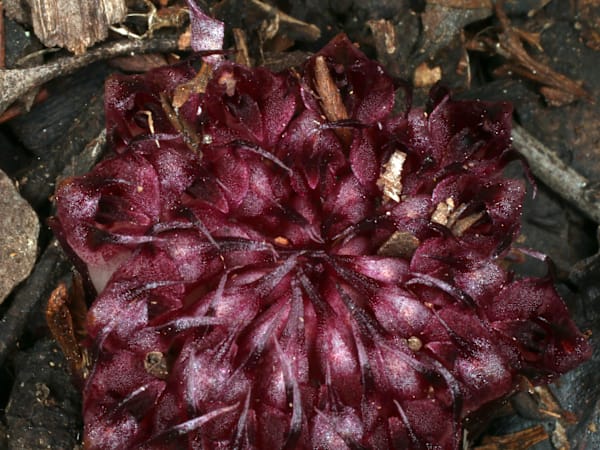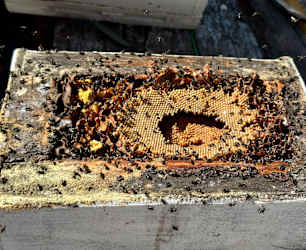In the soil, often beneath deep leaf litter, lives a cryptic and rarely-seen orchid: the Eastern Australian Underground Orchid (Rhizanthella slateri).
It spends almost its entire life completely underground, with only the flowers at or around ground level when they bloom in spring. Even then, you need to be on the lookout to spot them, because the flower heads are only 25-30 mm in diameter, and are usually hidden beneath leaf litter. They are typically found only by accident when mulch or soil is disturbed.
Now is the time to be on the alert, with flowering plants recorded between July and November. Its flowers also have a distinctive scent, reminiscent of vanilla, which would aid in discovery of a plant that is so hard to see.
Those who have spotted this orchid describe it as 'unmistakable' as it looks like no other plant or living creature. One tale I've come across is of a zoologist who had never heard of the species until literally stumbling onto the flower of an Underground Orchid while on a bushwalk with some botanists, and casually asking what it was he'd found; the botanists knew immediately, and responded with nothing like casual curiosity!
The first discovery of the Eastern Australian Underground Orchid was in 1931 in Bulahdelah, northern NSW. It has since been discovered in several other places, including two near Jervis Bay.
Just recently, a plant that may be R. slateri or another, as yet undescribed species, was found in the northern Dharawal National Park by members of the Macarthur branch of the Australian Native Orchid Society (ANOS).
Jim Cootes, Conservation Officer for Macarthur ANOS, was kind enough to share the below photograph of the inflorescence (flower head).

Owing to its cryptic underground lifestyle, there are many places where the Eastern Australian Underground Orchid is predicted to occur but has not yet been recorded.
One confounding factor is that this plant does not seem to be associated with any particular vegetation types, although so far it has mostly been found in sclerophyll forest (that is, forest dominated by eucalypts, or other tough-leaved plants such as paperbarks). This means it could grow almost anywhere.
CSIRO botanist Dr Mark Clements, who has spent many years researching Rhizanthella orchids, wrote a wonderful article for The Conversation, in which he compared finding one of these plants as 'like finding life on Mars.' He wrote that, "Its pollinator is probably a tiny fly that burrows down to lay eggs in the orchid, mistaking the flower for a fungus."
Like all orchid species, it requires a particular fungus in order for its seeds to germinate, and it seems that all Underground Orchids across Australia, including R. gardneri, from Western Australia, depend on the same fungus. And the most likely vectors for dispersing the seeds, which take 11 months to mature, are macropod species such as swamp wallabies and potoroos, spreading the seeds via their poo. If those animals disappear from the landscape, as has happened in parts of Western Australia, this can disrupt the orchid's life cycle.
Dr Clements also tells us that Underground Orchids are vulnerable to fire, which doesn't bode well for their future as global climate change increases the prevalence and intensity of fire across the country. All species of Underground Orchids in Australia are listed as threatened.
The Rhizanthella genus is endemic to Australia, meaning Underground Orchids occur nowhere else in the world. If they are to have a future, it is in our collective Australian hands.
Some other fun facts about Underground Orchids are that they are leafless and rootless. They do not produce chlorophyll or photosynthesise, instead gaining their nutrition from symbiotic association with soil fungi (a condition that is technically known as mycotrophy).
You can read more about the Eastern Australian Underground Orchid on its NSW Threatened Species Profile page. This contains information about current and predicted distribution, which includes the entire Illawarra region.

References
- Mark Clements (2020), 'Like finding life on Mars: why the Underground Orchid is Australia's strangest, most mysterious flower', The Conversation, online, accessed 5 October 2025.
- NSW Office of Environment and Heritage (2019), Eastern Australian Underground Orchid - profile, online, accessed 5 October 2025.





